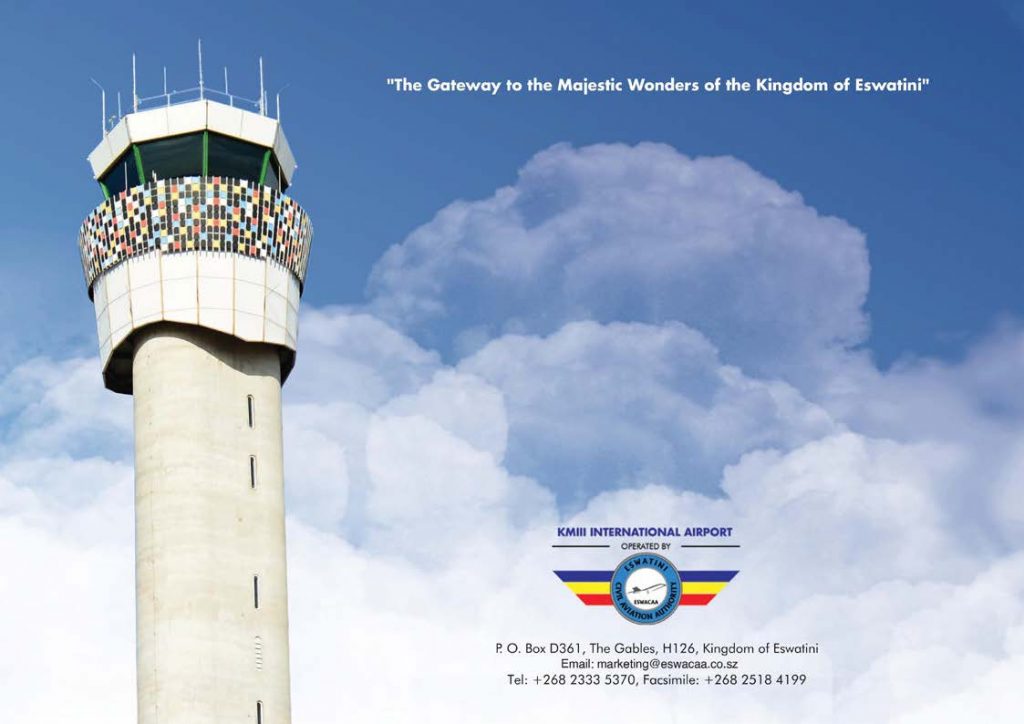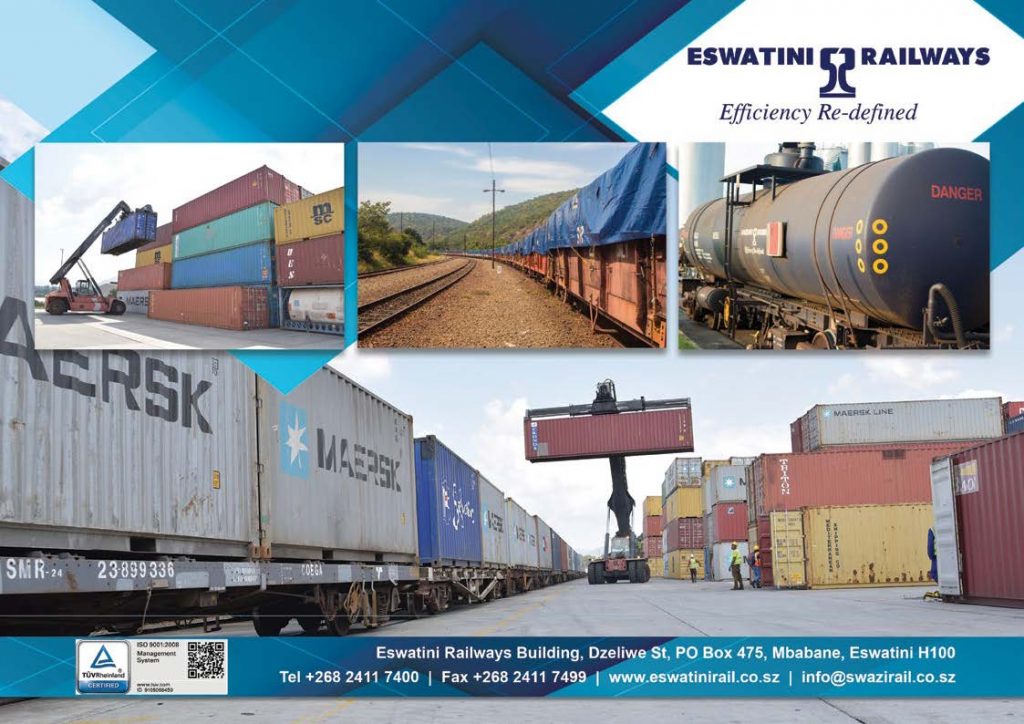The PM pointed out that the current poor state of the country’s road network did not reflect a lack of effort, as the Administration had been forging ahead with robust maintenance plans to improve the country’s roads infrastructure: “The heavy rains which are so welcome in the agricultural sector have been a drawback on roads rehabilitation initiatives.” He then listed other positive developments of considerable benefit to the nation as it entered 2022, and which reflected that over 90 percent of the roads earmarked for maintenance had been covered:
• Roads covering 1 328 km had been bladed countrywide
• Three other major roads were upgraded to paved standard, namely
– Siteki-Tikhuba (D12)
– Siphocosini-Sigangeni (D78)
– Siphambanweni-Nsalitje (MR21)
• The Probase project covering 200 km has been completed
• Major projects underway are the rehabilitation of the Mhlaleni-Nhlangano and Mafutseni-Mliba roads
Returning to the 2022/23 Budget Speech, Minister Rijkenberg declared that there has not been enough preventative maintenance of the kingdom’s tarred roads, which involves regular tasks such as sealing cracks and ensuring that drainage is kept open. The gravel roads also need to be shaped more regularly and re-graveled when needed, he said. This was followed by the announcement that government was allocating an additional E80-million to the Ministry of Works for the maintenance of roads, and re-prioritising a further E150-million to its capital budget to begin resurfacing existing tar roads where patching is becoming counter-productive. The Minister then voiced the following assertions:
• The completion of the Lukhula–Big Bend road (MR 13) and the progress made on the upgrades of the Manzini-Mbadlane highway (MR 3) will significantly transform Eswatini’s road transport landscape
• The improvements that have been achieved in the rural areas by introducing Probase technology and the single-seal approach to road paving, have also contributed positively to improving the country’s road network
• Prioritisation of roads in the Shiselweni region remains key in ensuring that the benefits of growth are enjoyed by all citizens and residents of Eswatini. The re-launch of the Nhlangano-Sicunusa road (MR13) is a positive contribution to the realisation of this vision, one that will ultimately stimulate economic activity along the Nhlangano-Sicunusa corridor and which government anticipates will be completed within the next 18 months
SKYWARDS
Minister Rijkenberg said that a noteworthy success of which he felt particularly proud was the completion of the highway between Manzini and King Mswati III International Airport. Regarding the latter, he continued, it has since operations began in 2014 not yet experienced full capacity, and even though commercial activity remains constrained, efforts are underway to increase airline activity and have the airport facility operating as a distribution hub to other destinations. Rijkenberg then disclosed that Royal Eswatini National Airline Corporation (RENAC) – which is a parastatal mandated to revive the local aviation industry – had acquired two 50-seater airplanes to operate flights between Eswatini and Cape Town, Durban, Johannesburg and Harare. He said that the aircraft were currently being rebranded, in anticipation of the service becoming operational in June 2022.
State Carrier
RENAC was established in 1978 as a national airline. After a restructuring exercise that lasted from 1996 to 1999, a joint-venture between the government of Eswatini and the then South African Airlink led to the creation of an airline that is now called Eswatini Airlink. The preexisting entity retained its ticket sales agency, as well as its aviation fuel supply business at Matsapha International Airport.
In 2016, RENAC was given the mandate to revive the national airline, and in its quest to achieve said aspiration, the Corporation has established various air travel support business units. The current portfolio encompasses a range of services such as airline ticket sales, travel insurance, holiday packages, cruise packages, hotel booking, car rental, shuttle booking, ground handling services, aviation fuel sales, private air charter services, as well as commercial air charter brokerage services. The company is under its charter wing also responsible for all State travel.
RENAC boasts highly experienced aviation personnel, as well as a qualified and committed workforce in all its departments. It envisions being the continent’s pride in travel solutions, globally connecting the kingdom through offering safe, efficient and competitive services which ensure customer excellence. The Corporation complies with international quality and safety standards, as well as world best practices. RENAC sees itself in collaboration with key stakeholders playing a pivotal role in the transformation of the local air transport industry, for the benefit of both the passenger and airfreight sectors.
Regulator
The Eswatini Civil Aviation Authority (ESWACAA) is an administrative and commercial statutory body established by government and which became operational on 7 December 2009: it is mandated to provide, in an economically viable manner and in accordance with international standards, air transport services and the regulation of civil aviation activities in Eswatini. As civil aviation is a very technical and heavily regulated global industry, it became necessary to establish an autonomous body that would focus on the growth and professional management of the industry and have the Minister of Transport as its political head.
Through an eight-point strategic plan, the Authority’s focus has been on addressing the eight critical elements raised by an ICAO audit conducted in 2007 and which resulted in a ban of Eswatini-registered aircraft by the European Union. ESWACAA’s immediate objective is to ensure that Eswatini complies with all laid down industry standards. The Authority is also attracting air transport business into Eswatini for tourism, trade and investment. ESWACAA manages all airports in the country, namely King Mswati III International Airport and Matsapha International Airport.
FACILITIES
King Mswati III International Airport (KM III) was opened on 7 March 2014 and the first commercial flight took place on 30 September that year. It is the kingdom’s major international airport, with the capacity to accommodate large aircraft and long-haul flight operations that connect Eswatini directly with the world. It is located on flat terrain with good visibility, and is a strategic gateway to Eswatini and the surrounding region for tourism and trade, passengers and cargo. The state-of-the-art facility is capable of simultaneously handling – to the safety and security standards required internationally – two Code E aircraft such as the Boeing 747, Boeing 777 and Airbus 340, and three Code C aircraft such as the ERJ 135.
The KMIII complex is arranged in a public precinct of structures which includes the terminal building, cargo building, various support buildings and public parking areas that cater for 200 vehicles in a modern facility designed to international standards. As described by ESWACAA, the airport is “a visual statement and symbol of Eswatini as a country, an array of modern buildings set in extensive gardens of visual texture and colour, with an overall effect of blurring the boundary between structures and landscapes”.
The terminal building is designed to accommodate 360 000 passengers annually, while processing about 300 passengers an hour: it is designed to meet the functional expectations of the traveller, and presents a sophisticated gateway into Eswatini by receiving passengers into large, multi-volume departure and arrivals halls that scoop natural light into the heart of the building. The waiting lounge is located in a large, spatial volume that supports two embarkation gates with a choice of duty-free shopping options. From this lounge the waiting passenger has a view of the runway and aircraft movements. The terminal building is capable of meeting all current flight and passenger projections, and is also designed to meet the future needs of the airport to expand and absorb projected future air-passenger and cargo demands for the region. The 1 200 sq metre cargo building is capable of managing the current cargo projections efficiently, and is designed to expand according to the airport’s future requirements.
Supporting
Matsapha Airport: ESWACAA continues to manage and operate this facility as an alternate aerodrome to cater for VVIP movements, mercy flights, and for the establishment of the Eswatini Civil Aviation Training Academy (SCATA). The establishment of SCATA is the answer to the skills that need to be upgraded to keep pace with the evolving knowledge and expectations of the industry, and to reduce dramatically the cost of training that the Authority presently faces, as it has to send staff out of the country for training at very high cost.
Nhlangano Airstrip: In the pipeline is the development of the Nhlangano Airstrip into a usable aerodrome to service the south of the country.
TANKS FULL
The Petroleum Act of 2020 is now operational and establishes the Eswatini National Petroleum Company, which is to be responsible for the planned construction and operation of a Strategic Fuel Reserve (SFR) facility at Phuzumoya in the Lubombo region. Government has thus allocated E529-million to the Ministry of Natural Resources to carry out its programmes. His Majesty King Mswati III officially launched the SFR initiative on 18 October 2013 by means of a sod-cutting ceremony: a litany of challenges has subsequently prevented the E900-million undertaking from getting off the ground, and it was most recently said to be “at the resource-mobilisation stage”.
Through the SFR, government aims to ensure the supply of fuel for up to 90 days in the event that the country experiences shortages brought about by interrupted deliveries: the latter occur, albeit infrequently, when coastal storms affect harbour operations in South Africa and/or Mozambique, refineries/depots in those countries conduct emergency maintenance/repairs, or industrial action impacts upon cross-border transport. Phuzumoya is a strategically-critical location for the SFR site: it is here that the line to/from Eswatini Railways’ International Satellite Port at Matsapha branches northeast to Maputo harbour in Mozambique, and southeast to the ports of Richards Bay and Durban in South Africa. The SFR was originally planned to comprise:
• Gasoline storage tanks
• Diesel storage tanks
• Piping systems
• Storage-dyke systems
• Oil/water separator systems
• Backup electricity-generation systems
• Railway-wagons loading/offloading system
• Loading-arms for loading trucks
• Limited truck-offloading systems
• Road network
• Concrete, rock and asphalt paving
• Administration block
• Laboratory
• Water-treatment/sewerage system
• Potable-water utilities
According to a Ministry of Natural Resources and Energy status report on the implementation of what is regarded as a very important national project, the preliminary works of Phase 1 undertaken to date were:
• A construction work-plan has been prepared by the primary contractor, and activities are undertaken in line therewith
• Designs for the fuel storage facility have been completed
• The contractor has cleared the undergrowth and stripped the topsoil
• The Ministry has zoned the site, coordinates for the project have been defined, and a coordinate diagram has been produced
• Eswatini Electricity Company, at the Ministry’s request, has begun constructing a transformer to service the facility
• The Ministry of Public Works and Transport has completed preliminary designs for an access road to the site, estimated the cost of constructing the access road and is working on finalising the detailed designs
• Eswatini Railways has been engaged to supply bulk water to the facility and is laying onsite pipes
RAILFREIGHT
Railways continue to be the prime mode of transportation of bulk commodities: among sector participants, a major source of speculation remains the ‘Trans-Eswatini Rail Link’ involving the kingdom and neighbouring South Africa, the implementation of which has long been impacted by adverse economic events globally and regionally. In 2012, the two countries saw it appropriate to initiate an approximately E17-billion Joint Railway Strategic Initiative between South Africa’s Transnet Freight Rail (TFR) and Eswatini Railways (ESR). The venture entails building a 146 km line from Eswatini’s northwest border to Sidvokodvo in the centre of the country, and from there refurbishing the 131 km of existing line to the southeast border.
The resulting rail-freight corridor between South Africa’s Mpumalanga and KwaZulu-Natal (KZN) provinces – specifically the coalfields of the former and the latter’s coal terminal at Richards Bay – will bring substantial benefits to both countries and their parastatal railways: for TFR the aim is to free its 68-million-tonnes-per-annum line through rural KZN of the 15-million tonnes taken up by general freight, which ESR will instead move through the kingdom and generate substantial revenue in the process. Most recently, Finance Minister Rijkenberg announced that on the Eswatini side, preliminary works on the project have commenced, and that to prepare the route for construction, 253 project-affected properties have to be resettled. He also disclosed that ESR has embarked on the expansion of its Inland Container Depot/Dry Port at Matsapha, for which funds amounting to US$969 000 have been secured from the Republic China-Taiwan to finance the development of architectural designs and a feasibility study.
ESR’s Strategic Plan to 2022 was said to have come at a time when the company was facing a great deal of competition from its external environment, so it was compelled to consider capturing and creating new demand in uncontested marketspaces. As a result, the ESR Board adopted a Blue Ocean strategy which demands that the entity survives competition, and in the process identifies niche markets in which to thrive and make competition irrelevant. ESR has thus formulated a business strategy that focuses on core competencies and value propositions, as well as the company’s competitive advantages. The Blue Ocean strategy is focused on the key areas of diversification, efficiency and high performance through harmonious relationships. The corresponding initiatives through which ESR aims to achieve its vision of being “a sustainable high-performing logistics hub” are:
• Business Diversification programme
• Systems Integration programme
• Relationship Development programme
Each has several component projects, which will ensure that they meet their objectives. Ultimately, these focus areas are aimed at providing a seamless service to current and future customers, being proactively oriented, and diversifying services to provide total logistics solutions. Among the Business Diversification programme’s projects is the Public Siding and Warehousing initiative which was born through the Total Logistics concept. These projects are an addition to the already existing ESR Capital Infrastructure Projects, namely:
• Eswatini Rail Link
• Mpaka Inland Container Depot
• Expansion of Matsapha Inland Container Depot
• Sidvokodvo-Phuzumoya upgrades
• Mananga-Goba Junction
ESR top management concedes that Blue Ocean will require a huge capital outlay for it to be effectively implemented, as it is an investment-intensive means to address some of the internal weaknesses that are currently constraining the company. As a result, the focus of the strategy is on business development in order to be “a Sustainable High-Performance Logistics Hub by 2022”, which is the Company’s new vision statement. At the 2019 Eswatini Quality Awards – sponsored by the European Union, organized and hosted by the Ministry of Commerce, Industry and Trade – ESR won both ‘Company of the Year’ and ‘Service of the Year’. The latter award was for the second consecutive year, while in 2018 ESR also won the SADC Quality Award for Best Parastatal.
INNOVATIVE TRUCKING
Cargo Carriers initiated cane transport operations in the Eswatini sugar industry in 1961 with the opening of the Mhlume depot.
Cargo Carriers’ Sugar Division operates from two registered depots strategically placed in Eswatini (at Big Bend and Mhlume). The Sugar Division provides selective logistics services within the sugar industry supply chain: these include infield loading and haulage, direct-to-mill and zone-to-mill cane haulage.
Over the past 20 years, Cargo Carriers has invested substantially in systems, software development and the development of logistical skills, and has transformed from purely a trucking company into a logistics and supply chain service provider, based on the experience and fundamentals of intelligent trucking.
In recent years the company embarked on a concerted Safety, Health, Environment and Quality (SHEQ) initiative, and has made industry-leading strides in becoming accredited on various SHEQ fronts.
The company is ISO 9001:2015 and 14001:2015 and OHSAS 45001:2018 accredited. Quality accreditation and continuous improvement of these procedures and practices are likewise a vital cog in the wheel for Cargo Carriers’ business.
Enterprise Development
Cargo Carriers has committed itself to social responsibility and development by establishing joint-venture transportation and logistics businesses, including owner-driver programmes within some of the key industry verticals in which the company operates. In 2003, Cargo Carriers launched its Owner Driver / Empowerment programme empowering 32 individual entrepreneurs and in 2008, this same programme was successfully rolled out in Eswatini.
Innovation lies at the heart of the Cargo Carriers Eswatini Way
Success is best when it is shared
Reflective of the company’s commitment to positive change, the business is passionate about promoting long-term financial success, skills development, attracting and retaining scarce and specialist skills. March 2021, saw the launch of the ‘Cargo Carriers Eswatini Employee Trust’, where the company partnered with employees to create a culture of ownership where employees share in the future success of the business.
With Cargo Carriers’ track record of innovation, careful strategy and operational efficiency in the sugar industry, it has established itself as much more than a sugar transporter and is proud to be a stakeholder in Eswatini’s economy and its people.


